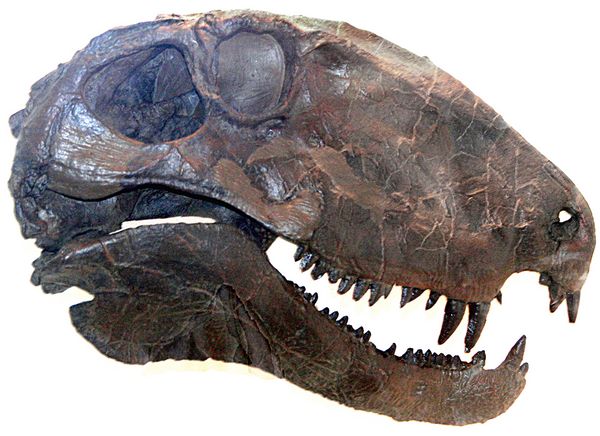Athena Review Image Archive ™
Dimetrodon limbatus skull

Skull of Dimetrodon limbatus (AMNH; photo: Athena Review)
Dimetrodon limbatus was a large synapsid predator from the Early Permian at about 280 mya, with enlarged canines and incisors, and thus was named Dimetrodon ("two tooth sizes") by Cope in 1878. The skull illustrated here (AMNH cat.4636), now at the American Museum of Natural History, was discovered in 1906 by E.C. Case on Godlin Creek in the Permian Basin of north Texas.
Dimetrodon, as a synapsid reptile, had a large skull opening behind the
eyes for jaw muscle attachment. Synapsids were ancestors of mammals. Compared with a sister genus, Ophiocodon,
its teeth were further differentiated along mammalian lines, with small
incisors, two huge deep- rooted upper canines on each side, and smaller
cheek teeth, all replaced continuously in the reptilian manner. Its jaw
hinge, however, comprised of the quadrate and articular bones, was
fully reptilian (contrasted with the eventual mammalian jaw hinge of
the dentary and squamosal bones).
Dimetrodon
also had a primitive reptilian middle ear, hearing only ground-borne
vibrations. Its lower jaw, however, included the first signs of a bony
prong later to become part of the reptilian eardrum as the columella or
stapes, which sensed air-borne sound vibrations. Reptiles
retained the stapes as a single ossicle in the middle ear, while early
mammals developed three ossicles, the same as today: stapes,incus, and
malleus, the latter two being reformed and miniaturized reptile jaw
bones.
References
Copyright © 1996-2020 Rust Family Foundation (All Rights Reserved).